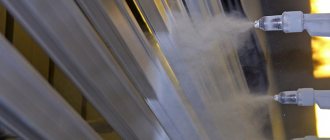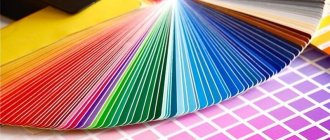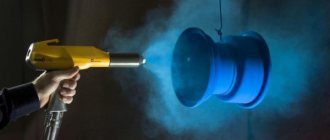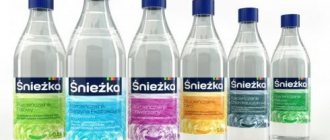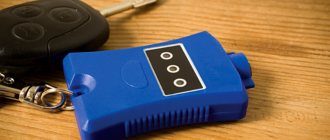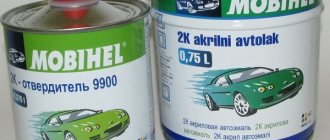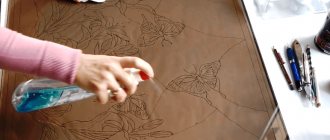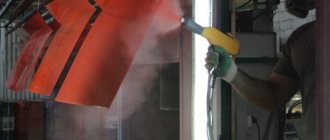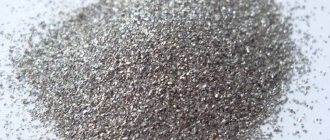Paint removal methods
There are various methods to quickly remove old paint from metal at home. In order not to damage the surface area being treated, you need to carefully prepare and choose the best method that will help get rid of the previous coating.
Mechanical method
The simplest and most economical option is to remove old paint using a regular construction spatula or a good knife. Using them, you can remove cracked or swollen coating from a metal surface without any problems. It is enough to pry and pick off the loose layer, and then wipe off the stubborn residues using sanding paper. For larger surfaces, you can use a grinder, or equip a drill with a wire brush.
Mechanical method of removing paint
Sandblasting technique
A special way to mechanically remove old paint from metal is to use a professional sandblasting machine. This is a very fast and effective technique that allows you to wash even heavily ingrained coating. However, the cost of such equipment is quite high, so the best option would be a short-term rental or inviting a specialist.
Sandblasting metal surface
Thermal method
The fastest way to remove paint is thermal. This technique involves intense heating of the old paintwork. For these purposes, special blowtorches and professional construction hair dryers are used. Before removing old paint from metal, you need to make sure that the base will not be damaged by high temperature.
Use of chemicals
For relief and dimensional metal products, a chemical cleaning method is best suited. This is one of the simplest and most effective options. Modern cleaning compositions are available in various forms - from gels to aerosols. It is enough to thoroughly treat the areas to be cleaned and wash off the old paintwork that has come off within two to three hours. The reaction between the chemical composition of the solvent and the old layer ensures the rapid peeling of all paint, including small inclusions.
Removing paint using a remover
Popular metal removers
Manufacturers offer a wide selection of products that differ in composition, technology of use and scope of application. When choosing a remover to remove old paint from metal, you need to consult a specialist and carefully study the instructions for use indicated on the label.
It is traditionally believed that the best removers and solvents are produced by foreign manufacturers. However, today the market offers domestically produced compounds that are in no way inferior, and sometimes even superior, to imported competitors. The most popular brands include RAIN, ABRO, BOSNY, Prestige, Composite, and Kraski Net.
Washing technology
At its core, paint remover is an acid, so before working with a chemical composition you need to exercise extreme caution and ensure that you have the necessary protective equipment. The algorithm looks like this:
- Wash off all dirt and dust from the surface, cleaning the treatment area.
- Apply the chemical composition in accordance with the instructions.
- Cover the treated surface with film for 30-40 minutes, depending on the specifics of the solvent and the thickness of the coating to be removed.
- Remove the film and mechanically remove the peeling paint.
- Sand the surface with grit paper or wire brush.
- Remove the remaining composition with kerosene or an alcohol-containing solution.
After the cleaned metal is completely dry, you can proceed to painting.
Popular paint removers for metal
You can learn more about methods for removing paint from a car body.
How to remove powder paint using a special remover
To remove powdered paints from surfaces, special formulations containing aggressive solvent substances are produced. This method does not require special equipment and is one of the simplest and most cost-effective.
The products are immersed in the remover or the composition is applied to the surface, wait until it softens and peels off the paint crust, then clean it off with spatulas. The effectiveness of the work depends on the correctly selected product, the thickness of the layer and the age of painting.
Expert opinion
Zakharova Irina Yurievna
Cleaning professional with 15 years of experience. Our best expert.
Ask a Question
There are universal removers on sale, as well as those designed for certain types of powder paints. When purchasing, you should read the instructions. Removers have a liquid or gel-like consistency.
General rules
How to properly remove a layer of powder paint:
- Before working with aggressive chemicals, wear personal protective equipment - gloves, goggles, clothing made of coarse durable fabric, a respirator. The work is carried out in a room with good ventilation.
- Products from which paint needs to be removed are washed, degreased, and dried well.
- Gel-like solvents are applied with a brush, roller or spatula. They do not drain and adhere firmly even to vertical surfaces. This way you can remove paint from floors, roofs, and large fences.
- To clean small items, use the immersion method. The liquid wash is poured into a container made of stainless steel or other material that is not afraid of acids and alkalis.
- It usually takes 15-30 minutes for the paint to start peeling off the piece. The drug also dissolves rust from metal and other impurities.
- The item is removed and the exfoliated areas are cleaned off with a spatula. If necessary, re-immerse.
- The final stage is washing in a sodium triphosphate solution or firing in an oven to remove any remaining toxic methylene chloride.
See also
How to paint with acrylic paints and the nuances of working with compositions
The higher the temperature of the wash composition, the faster the dissolution occurs. If necessary, the wash is heated to speed up the reaction.
Examples of special means
Let's look at the most popular and effective removers for removing powder paints.
"Fail-4"
The composition removes paints on any basis, including those based on resins. It also removes primers and putties. Works on surfaces made of metal, concrete, wood, stone, plastic. "Fail-4" is a liquid with high thixotropic properties. The remover can be diluted with isopropyl alcohol by 10-20%.
Apply in 2 ways:
- application to surface;
- immersion in a container - the liquid level is 1-2 centimeters above the product being processed.
Delaminations are removed with a brush, scraper, or high-pressure apparatus. Exposure time is from 3 minutes to 2.5 hours. Consumption – 150-250 grams per square meter of area. After dissolving the coating, the remaining substances are removed with water and special cleaning agents.
"Remover"
Liquid solution for removing paintwork by immersion. “Remover” is poured into a container made of inert material, and the product is kept for 10-40 minutes. The drug is suitable for reusable use. Before reuse, remove sediment from the container (with a separator or by filtration) and add a new portion of the solution.
To speed up the effect, “Remover” can be heated. The drug dissolves polyester and epoxy dyes and is suitable for metal processing.
Docker S8
Professional powder paint remover. Has a high speed of impact - 3-10 minutes. Odorless gel, used for outdoor and indoor use. Can be applied to the surface and completely immerse the product. After use, wash off any residue with water or detergents. Consumption – 1 kilogram per 5 square meters.
Liquid chemical solvents
For this method of removing powder paint, the item to be cleaned is placed in a special steel container or stainless steel bath, previously filled with liquid solvent. After some time, the powder coating begins to delaminate, but the metal remains unchanged. To obtain a quick chemical reaction, the part must be stirred periodically in the solution. After this process, the metal is cleaned of the old coating using spatulas and washed with water to completely remove any remaining solvent.
This wash is suitable for cleaning sharp parts that can easily be immersed in the prepared container. In addition to removing the old layer of paint, this product destroys rust and limescale deposits.
We recommend
Professional powder paint remover DOCKER S8 . Industrial use. Fast acting (3-10 minutes). Effectively removes all types of powder paints. Penetrates deeply into the coating, actively softening it. Can be used in everyday life. Gel solution.
Without smell. For interior and exterior use. Price. packaging
How to remove paint from rims
How to remove water-based paint
Features of removing different types of paint and varnish products
Any paint can be removed mechanically, thermally or chemically, but sometimes certain methods are preferable.
| Paint type | Removal method |
| Oily | A thin layer can be removed using any remover, for example, using acetone. A thick old layer requires mechanical cleaning. The most difficult areas are burned out. |
| Acrylic | The paint responds well to solvents and removers. To increase the efficiency of work, the surface should be cleaned. |
| Powder | The most effective way to remove paint is to burn it. If this method cannot be used for the product, then they resort to chemical agents, for example Fail-4 or Remover. |
| Aerosol (from a can) | You can get rid of such paint using sandpaper or a wire brush. For high-quality removal of the composition, the surface is treated with a solvent. |
Comfortable coloring
In order to carry out repairs using conventional paint, it was necessary to purchase special equipment. Powder paint is easy to apply and is immediately ready for application.
There is no need to purchase expensive designs for painting. Application of such a coating is available to any user. You will be able to purchase material intended for direct use.
Comfortable working conditions allow you to enjoy the application process; almost all of the material is used. You can carry out inexpensive repairs and get a unique design solution.
However, during the repair process, defects may form that need to be removed. The material dries in less than one hour; you will need a special solvent that can cope with imperfections.
Useful tips
The process of cleaning metal is very complex and time-consuming
However, if you take into account the following tips, you can make the procedure easier and more effective:
- Typically, paint removers are quite effective, however. If you first wash the surface thoroughly with warm water and soap, this will allow the remover to penetrate deeper into the paint layer and enhance its effect.
- Often the composition used evaporates too quickly. In order to prevent this, wax or paraffin is added to the composition. However, some cleaning products do not contain such ingredients. In this case, the situation can be corrected using plastic film. After applying the remover, it is enough to cover the metal with a layer of polyethylene so that evaporation slows down to an acceptable degree.
Processing old car body paintSource gidpokraske.ru
When the paint has softened as a result of the action of the product and hangs in pieces, the work is usually done with a sharp spatula or a metal brush. In some cases this does not threaten the integrity of the surface, but in delicate cases it can damage it. In such cases, you can use a high-pressure water jet to remove the old layer.
It is not recommended to use the same composition in all cases. Usually. For different metals and types of paint, it is necessary to select the most suitable compositions.
If there are several types of washes, it is not recommended
Not only will they not improve efficiency, but they may also negatively affect each other. Thus, mixing may simply result in an ineffective waste of money.
It is important not to forget about safety precautions while working. It is necessary not only to wear protective gloves and goggles, but also to ventilate the room where work is being done.
Removing old paint is a necessary stage of repairSource syntilor.ru
These and other tips help to carry out the work efficiently, reduce their labor intensity and prevent damage to the surface.
How to remove paint?
Removal of a worn out or outdated protective and decorative layer can be carried out in various ways, during which certain materials and tools will be used. The following options are considered the most popular and effective:
Use of available heating devices. Thermal exposure allows you to quickly remove the old composition, but can have a negative effect on the surface. For work, use a hair dryer, blowtorch or gas burner. If necessary, parts can be immersed in a furnace or fire.
Removing paint using heat is a labor-intensive process, the speed of work depends on the heating device and the thickness of the metal layer: the thicker, the longer it takes to clean
- Use of devices with abrasive attachments. The mechanical method allows you to clean metal parts systematically, adjusting the load on the surface. This method is not always suitable for working with small or relief elements. The process will take a lot of time, but may be the only correct solution. Among the devices used are sandpaper, a grinding and polishing machine, a grinder and brush attachments.
- You can wash the metal base with your own hands using acetone and white spirit. But if the resulting film has good adhesion to the base, then this will not help. This option is an excellent addition to the previous method.
- Quick results are achieved by using a special remover. The chemical method is good because it allows you to remove paint in a short period of time, and even difficult areas can be cleaned.
If the surface has been repeatedly coated with paint, then several approaches to applying the remover will be required.
The use of any tool or material must be done with caution; harm can be caused not only to the metal, but also to health
Metal burning
The essence of this method is to intensively heat the paint layer with a hair dryer or blowtorch. Under the influence of high temperatures, the coating begins to crack, after which it is removed with a spatula.
Thermal impact on metal is a labor-intensive process, the speed of which depends on the power of the heating devices and the thickness of the coating being removed - the thicker it is, the longer the removal process will take. Sometimes, to obtain a quick effect, parts can be fired over a fire or in a furnace, but this method is not suitable for all metals and is less progressive.
It is important to remember that many paint compositions can have good flammability even after the composition has completely dried. Therefore, this fact must be taken into account in order to avoid emergency situations and observe safety precautions.
Consumption
The consumption of the remover composition depends on many factors, for example, on the condition of the surface, the thickness of the paint and varnish material, the type of remover, air temperature, and other conditions. If the paint is applied in several layers and the coating is thick enough, you will have to apply the mixture to remove the dye several times, which increases the consumption of the solution accordingly. To remove an oil coating, the largest volume of remover is consumed compared to the removal of other types of paint and varnish products.
The remover is applied at the same thickness as the thickness of the paintwork. Therefore, the consumption of the mixture must be calculated based on the amount of coloring composition that was previously applied. In addition, the higher the air temperature, the faster the cleaning solution evaporates. When the room is too hot, the composition may not have time to completely dissolve the dye layer, so you will have to apply the remover again.
How to use powder paint remover
Powder paint solvent has a gel-like structure. To remove paint and varnish composition with its help, you need to proceed as follows:
- the composition is applied to the surface to be treated;
- you need to wait a little - during this time the powder paint softens;
- Remaining paint is removed with a special tool.
It is important! You should not leave the wash on for too long, as the softened material will dry out and you will have to repeat all the steps again. As a rule, such products are sold ready for use. You don’t need to think about what to dilute and in what proportions. But in any case, each manufacturer writes detailed instructions for use on the label. In it you will find the time required to soften the material, the operating technology, and safety measures.
Useful tips
It is recommended to adhere to the following rules:
- The wash must be suitable for its intended purpose. If the composition is intended for metal, using it on a wooden surface is not only ineffective, but also destructive to the material.
- Universal compositions are capable of removing all types of paint and varnish coatings, but their effectiveness is lower than that of specialized products aimed at specific types.
- It is hardly worth giving preference to overly active solutions. They are toxic and can sometimes damage the surface. Modern washes from well-known manufacturers have a milder effect, but at the same time they release fewer toxins.
- It is not recommended to mix different drugs with each other, as the consequences of this are unpredictable.
- The coating does not always peel off after the first treatment. If the material is covered in several layers, it will need to be processed several times.
- When working with chemicals, it is necessary to ensure good air circulation in the room - this will help remove toxins.
- If you have a choice, it is recommended to give preference to gel pastes. They are more expensive than liquids, however, due to the higher concentration of active components, their effectiveness is higher. In addition, it is more convenient to treat vertical surfaces with pastes, since the gel has low fluidity.
- If the remover contains paraffin (it acts as an evaporation inhibitor), the surface must be degreased. If this is not done, the proper level of adhesion will not arise between the new layer and the base.
The process of washing off paint at home does not require high qualifications and can be carried out by anyone. However, even such simple work is best carried out in strict accordance with the instructions while observing safety precautions.
Advantages of powder material
The color is widely used both in everyday life and in production. This comes with a number of advantages, including:
- profitability - due to its low cost, it is preferred by many clients;
- ease of use - the use of the material does not require special knowledge and effort, which contributes to its popularity;
- environmental friendliness - the composition of the color from a natural base allows us to claim that it is not harmful to human health;
- economical use - when used, there is almost no residue left, so losses are minimal;
- endurance - resistance to temperature and atmospheric changes;
- drying - the material tends to dry in just a few minutes;
- a large assortment of shades and colors;
- long period of use.
Types of washes
All types of washes are divided into two large groups: universal and specialized. Universal compositions are designed to remove any paints and varnishes from wooden surfaces. They are capable of dissolving paints and varnishes both water-based and those containing organic solvents.
The purpose of specialized removers is to soften only certain types of paints. For example, there are separate remover compositions for removing textured, oil-based and other types of paintwork materials. Specialized removers are considered more effective, since their development takes into account the characteristics of specific types of dyes. At the same time, specialized formulations are more expensive.
Removers are produced in the form of liquids, jelly and dry substances for further dissolution. When choosing a cleaning composition, it is necessary to proceed from the circumstances: for example, a jelly-like paste adheres well to wood, and therefore will not drain from vertical surfaces.
But liquid removers are the best choice if you have to clean a surface that has small parts or fine threads. If we are talking about expensive furniture (especially those covered with veneer), you need to choose a liquid that can be removed with white spirit, since if this is not done in time, the wood fibers of the product will swell.
Before purchasing a remover, it is recommended to carefully read the instructions (usually they are written directly on the packaging) or consult with a sales consultant. It should also be noted that not every preparation is suitable for working with wood.
How and how to dilute powder paint
To be honest, such questions immediately reveal a newbie - a person who is not familiar with coloring technology and, perhaps, does not even know what the paintwork material in question looks like. Yes, water-dispersion and water-emulsion paints, acrylic paints are diluted with water, oil paints are diluted with special thinners such as white spirit or turpentine. Manufacturers produce dry mixtures (putty, plaster, floor leveling mixture, dry glue, etc.). And by analogy with them, an ignorant person may want to dilute the powder to obtain a solution.
But the essence of painting technology is to spray powder onto the surface to be treated. In this case, electrostatic spraying is used (with a special spray gun), or the distribution of powdered dye over the part using the fluidized bed technique . The latest technology is used exclusively in factory conditions. Due to its complexity and the need for specialized and expensive equipment, it is impossible to implement it in everyday life. The essence of the method is the transition of the powder into a pseudo-liquid state by supplying air under high pressure. The part requiring painting is lowered into a tank filled with dye, where it is processed.
Electrostatic spraying technology involves applying dry powder to a surface under the influence of a positive charge generated by the spray gun . In this case, the object being painted receives a negative charge, due to which the paint is magnetized, its molecules reliably adhere to the surface and become one.
The nuances of cleaning different surfaces
If we talk about minor stains from paints and varnishes on clothes or surfaces, in most cases they can be easily removed with ordinary soap or washing powder. Old stains are treated with solvents.
| Name | Water based | On solvents | Silicate | Hair and eyebrow dye |
| Concrete | Due to the porous structure, it is better to use a brush to wash | It is advisable to use a remover, since mechanical cleaning risks damaging the surface. | Wash | Wipe with any solvent |
| Carpet, clothes, jeans, jacket | Fresh stains are cleaned well; the pigment can be absorbed into the material; stain removers recommended | Remove with solvents | Vinegar solution or ammonia | Stain removers, solvents |
| Pipes, bath, batteries | Easy to clean with a damp brush | Small stains are treated with solvents, and to remove the coating - with a remover. | No data | Damp cloth or solvent |
| Wood (windows, doors, floors) | Wash well with plain water and a stiff sponge or brush. | It is advisable to use a remover, since mechanical cleaning risks damaging the surface. | No data | Damp cloth or solvent |
| Metal, glass | Mechanical cleaning is not recommended; soft brush or hard sponge | Wash | No data | Wet sponge, solvent |
| Ceiling, walls | Wash well with plain water and a stiff sponge or brush. | Wash | Wash | Depending on the type of surface, it is preferable to remove fresh paint with a dry cloth |
| Plastic | Easy to clean with a damp brush | Products suitable for removing paintwork from plastic | No data | Damp cloth or solvent |
| Skin of face and hands, hair | Wash with usual means: soap, shampoo; dry paint is cleaned with pumice stone or a sponge | It is difficult to remove due to the toxicity of solvents, it is better to wait, after a week the paint will come off on its own; in advanced cases, you can carefully treat problem areas with acetone, but in such a way as to minimize its contact with the skin | Vinegar solution | From the skin - with vegetable oil, from the hair - with a special wash |
| Linoleum | Easy to clean with a damp brush | Minor stains are treated with solvents | Vinegar solution or ammonia | Wet sponge, solvent |
You can learn about removing paint from bathroom walls in this article.
Features of removing different types of paint and varnish products
The variety of types of paints and their compositions necessitates a careful selection of materials for their removal. Let's look at the most frequently asked questions.
How to remove acrylic paint from metal
Perhaps the most easy-to-clean paint coating has an acrylic base. In situations where the surface is highly moisture resistant, it is permissible to use ordinary hot water mixed with soap and a small amount of alcohol. By using special substances, you can be sure that all paint will be removed in the shortest possible time.
How to remove powder paint from metal
Any method is suitable for removing powder paint and varnish from a metal base. However, you need to take into account that it is not so easy to remove powder paint mechanically - it is best to find a sandblasting machine. A simpler and more affordable option is thermal or chemical treatment followed by grinding.
How to Remove Oil-Based Paint from Metal
Almost any solvent will work for an old layer of oil paint. In this case, you should focus on the thickness, age and condition of the coating - from this you can understand how powerful a remover will be needed for removal.
Removing oil paint from an old car: before and after
How to remove latex-based paint from a metal surface
Mechanical and thermal methods can damage the base coated with a polymer composition. Like oil-based paints, latex-based paints are very vulnerable to chemical removers containing solvent elements, so this method is the best option.
Features of removal from different surfaces
Powder paints have increased adhesive characteristics; only special removers can be used to remove them. Solvents (white spirit, turpentine) will not cope with the task. When choosing a preparation, the type of material from which the color is removed is also taken into account.
Aluminum
To remove paint from aluminum (in particular, from car wheels), it is convenient to use removers. The paint layer is removed by applying gel-like products or by immersing the part in a container with the preparation. The following tools are suitable:
- "Fail-2", "Fail-4";
- Docker S;
- "Remover".
See also
How to properly remove paint from different materials and the top 9 best removers
These preparations wash off powder dyes with different bases:
- polyester;
- polyurethane;
- epoxy;
- epoxy polyester;
- polyacrylate.
For aluminum surfaces, you can use other types of paint removal - water- and sandblasting, firing.
Metal
To remove paint from metal surfaces, removers (gels and liquids), sandblasting and waterjet methods are used. Chemical solvents (washes) contain special corrosion inhibitors and remove pockets of rust from products and surfaces. Most popular removers are suitable for metal.
Note that the firing method is not used for cast iron and brass. Do not use the thermal method for sheet and galvanized iron. The sheets become deformed and scale appears on them. The products will require sanding in the future.
Small metal products can be immersed in a container with a remover; for vertical surfaces it is convenient to use a gel.
Several ways to clean old water-based paint from ceilings and walls
Depending on the type of water-based emulsion, the type of surface and the type of room in which repairs are planned, you can give preference to one or another method of eliminating this problem. In any case, it is necessary to ensure the safety of furniture and interior items in advance, prepare a stepladder or table, and also do not forget about your own health, armed with safety glasses and a respirator.
Washing off with water
Removing paint from ceilings and walls can be done with just a long-handled roller, a bowl of water and a spatula. It is necessary to treat the ceiling or wall with a wet roller in small areas to avoid drying out, and then scrape off the soaked material with a spatula.
Advantages of the water method:
- The most inexpensive option;
- No dust thanks to humidification.
Disadvantages of the water method:
- Suitable for non-waterproof paints only;
- One of the most labor-intensive;
- Efficiency depends on the number of painted layers.
Thermal or thermal method
You can also remove water-based paint from walls and ceilings using a hair dryer. When areas of the surface being cleaned are heated, the coloring matter softens. After this, the water-based emulsion must be quickly scraped off with a spatula before it hardens again.
Advantages of the thermal method:
- Ideal for removing thick layers of waterproof paint;
- Removing the liquefied substance does not require much physical effort;
- Water-based paint is safe when heated, as it does not release toxins.
Disadvantages of the thermal method:
Expenses for renting or purchasing a hair dryer; It is necessary to turn off the hair dryer every 15–20 minutes to avoid overheating of the tool; Do not heat the surface near electrical wiring, sockets and junction boxes.
Mechanical or mechanized method
To remove paint from the walls in the bathroom, kitchen or other rooms mechanically, use a drill with a special sanding attachment, which looks like a brush with metal cutters or a hand-held sander.
Advantages of the mechanical method:
- Fast and effective option;
- No subsequent grouting required.
Disadvantages of the mechanical method:
- A lot of dust spreads;
- Defects in the form of notches and roughness remain on the surface being cleaned;
- Noise level is above average;
- Special skills are required when working with electrical devices.
Method using glue
Old newspapers and other unnecessary waste paper are glued using wallpaper glue or regular starch paste to the surface to be cleaned. Then, when the pasted layer has dried, the newspapers are lifted with a spatula and come off quite easily along with the old painted layer. The better the paper adheres to the surface being cleaned, the easier it will come off after drying along with the paint.
Advantages of the method using glue:
- This method is effective for washing waterproof emulsion;
- No large outlay of money is required.
Disadvantages of the method using glue:
- You have to wait more than one day for the newspapers and glue to dry;
- You may have to mechanically clean the most stubborn areas.
Chemical method
If you know the type of old water-based paint that needs to be removed, then purchase a remover for water-based paint of a specific type. If things are different, you can buy a universal active substance for removing water-based paint. Now such a product can be found in every building materials store.
To clean the ceiling from old water-based emulsion, you will need a gel-like remover. It is most convenient to apply in such cases.
Advantages of the chemical method:
- The most highly effective and modern method;
- No dust;
- No noise.
Disadvantages of the chemical method:
- Careful protection from toxic emissions is necessary;
- Chemical solvents are not suitable for plastic surfaces;
- Sometimes re-application of the substance is required.
After carrying out all the necessary manipulations to clean the walls and ceiling of old water emulsion, it is recommended to thoroughly vacuum the room, ventilate well and carry out wet cleaning.
What interior paints for walls and ceilings are common on the market and what their features are, read in a special review article.
Examples of cleaning compositions
Paint remover "Remover"
The Remover brand Powder Paint Remover is an effective, reusable product designed for removing epoxy, polyester and epoxy-polyester coatings. Not only steel can be processed, but also aluminum. "Remover" is a ready-to-use drug. The table below shows the parameters corresponding to this chemical.
| Variety of paint | The period of holding the product in the bath at a temperature of the product from 20 to 30 degrees above zero | The period of holding the product in the bath at a temperature of the product from 30 to 40 degrees above zero | The period of holding the product in the bath at a temperature of the product from 40 to 60 degrees above zero |
| Epoxy, epoxy-polyester | 20-40 minutes | 15-20 minutes | 7-10 minutes |
| Polyester | from one and a half hours to a day | 2-3 hours | 1 hour |
Note! Chemicals of this type can only be heated if there is a ventilation system.
Tips for using Remover remover:
- Fill the container with water so that the liquid is 1-2 centimeters above the level of the immersed part. This is an important point, since carbon dioxide, which is part of the air, negatively affects the stability of the bath.
- The preferred material for a bathtub is steel (stainless steel is best). It is strictly not recommended to use zinc, galvanized or aluminum containers.
- The product must be dry before dipping.
- Due to periodic bubbling (the process of pumping air through water), the removal of the paint layer can be intensified.
- When the coating begins to peel off, it can be removed from the container and left in the air to allow any remaining remover to drain. In this case, the product must be positioned so that the liquid leaves all cavities and recesses.
- If some fragments do not separate, you can repeat the wash, but this time increase the temperature and (or) the time the part is in the bath.
- After removing it from the bath and draining the remaining rinse, the product is washed in water.
- Avoid getting water into the wash solution, as this will make the solution unsuitable for use.
- To replenish the container, a fresh solution is used as an activator. The bath is filled only after the sludge has been removed.
- Waste paint from the bathroom should be removed using a filter, separator or membrane-type filter press. These measures will extend the service life of the cleaning solution.
Paint remover "Fail-4"
This product is used to remove all types of powder compounds, including epoxy, polyurethane, polyester, epoxy-polyester and vinyl chloride. Both steel surfaces and products made of non-ferrous metals can be cleaned. It is possible to clean plaster, concrete, stone and wooden surfaces.
Main parameters of "Fail-4":
- The washing composition is a thick liquid with significant thixotropic characteristics.
- The drug includes a solvent, an inhibitory substance, a thickener and complex converters.
- The remover is not a corrosive substance.
- Hazard class - third.
- The liquid is not flammable.
- The cleaning agent is removed from the treated material using water, technical cleaning agents or a solvent.
- Consumption - from 120 to 250 grams per square meter of surface.
- Recommended temperature of use can range from 8-25 degrees above zero.
Before applying the composition, the surface must be prepared. Preparatory work consists of cleaning the treated coating from contaminants using water or technical detergents.
The wash can be applied in several ways:
- Brush, roller, pour or spray.
- By immersion. If this method is chosen, you will need a container of the appropriate size in which to hold the part for several minutes. The maximum time that can be allocated for dipping an object is 2.5 hours.
Advantages of the drug:
- It is possible to remove all types of powder paints, which distinguishes Fail-4 from its competitors.
- Low wash consumption. For competing formulations, consumption ranges from 300-600 grams per square meter, while for Fail-4 this figure does not exceed 250 grams.
- Exposure time ranges from 3 to 15 minutes, and for analogues it can reach several hours.
- Good thixotropic properties. Thixotropy refers to the ability of a remover to linger on vertical surfaces.
- The remover can be diluted, if necessary, with isopropyl alcohol. Proportions: 1-2 parts alcohol to 8-9 parts cleaning agent.
- Water makes the remover more viscous, but its effectiveness is greatly reduced.
- Remains active at low temperatures without losing its qualities when defrosted.
Instructions for application in different ways:
- Application by brush, roller or pour-on method. Apply the remover composition in an even layer to the surface to be cleaned and wait for 3-15 minutes until the coating begins to swell and crack. Remove any remaining paint using a spatula or scraper. If there are areas of the coating that cannot be mechanically removed on the surface, place the part in the remover again. Do not forget that the total time the item is in the chemical solution should not exceed 2.5 hours.
- Application by immersion. The composition is poured into a container, where the item being processed is then placed. The average time required for cracks to appear in the coating ranges from 3 to 20 minutes.
How to remove?
Before treating a metal surface with a stripping solvent, you must first thoroughly clean the dirt and dust from the metal, and then begin applying the remover.
The cleaning composition is left on the surface for approximately 20-30 minutes, the exact time is indicated on the product packaging. In order to increase the evaporation time, the applied composition is covered with thick polyethylene film.
When the paint has softened well, wrinkled and begins to peel off on its own, you can begin to remove it using a spatula or wire brush. Removing dissolved paint is easy. After the paint has been completely removed from the metal, it is necessary to clean the surface of any remaining remover. The packaging also indicates the products that are intended for these purposes.
If after the first application of paint remover it was not possible to completely clean the surface, you must repeat this procedure the required number of times.
If it is necessary to wash off powder paint from an aluminum surface, it is worth considering the fact that for aluminum, compositions without alkalis are chosen that can destroy it.
Considering that solvents are chemical and toxic substances, it is necessary to take care in advance of safe work with these materials - it is recommended to use protective clothing, goggles and respirators.
After using the remover, it is advisable to thoroughly ventilate the room.
Based on customer reviews, we can conclude that removing paint from metal is a simple and quick process that anyone can do on their own. There should be no difficulties when cleaning surfaces, provided that the cleaning agent is correctly selected depending on the type of old coating, and all points in the instructions included with the package are followed.
See below for more details.
Chemicals
Powder paint can be removed using a stripping solution. A remover is a chemically active substance that softens the paint layer, after which it is removed with a regular metal spatula.
Although the use of chemicals is the simplest method of removing paint, this solution comes with a number of disadvantages. First of all, it is easiest to wash off a relatively fresh coating, but if the surface was painted 2-3 years ago, it will not be easy to remove the paint. In addition, the chemicals are highly toxic. For example, a common component of removers is the poisonous methylene chloride.
The work is performed in the following order:
- To protect your eyes and skin from chemicals, wear rubber gloves and safety glasses.
- Dip the product into a container with remover.
- We expect the paint to swell within 15-20 minutes. Stir the solution periodically.
- When the paint begins to peel off, take out the product and clean off the remaining coating with a scraper or spatula.
- Place the object in a solution of sodium phosphate for several minutes. If there is no sodium, you can rinse the product in a container with plain water. It should be noted that water will not completely remove traces of methylene chloride, so after washing the cleaned item must be heated.
Note! The effectiveness of the chemical remover is significantly reduced at low air temperatures, so in such cases the liquid must be heated.
Metal paint removers
Most often, metal paint remover is used in services specializing in auto repair. In addition, they can be used to clean other structures made from this material, such as the walls of garages and hangars. It is much easier to remove old paint from metal than from wood, since its layer is on the surface, clinging to microcracks in the material.
Many car manufacturers use acrylic as a base for paint compositions. Based on it they do:
- acrylic paints;
- metallic;
- nacre;
- acrylic lacquer.
Previously, alkyd was also common, but now it has been abandoned due to the difficulties of application and further operation.
There are several manufacturers that produce products that allow you to remove pigment from metal of various classes.
This product not only helps remove pigment, but also corrodes corrosion; most often it is used specifically to remove rust and rot from metal.
Body 700, “Prestige” - gel washes.
Both products are quite popular; they are applied to the surface of car parts with a brush; after drying, the material peels off the metal in layers and is easy to remove with a spatula.
Abro PR-600 - aerosol remover.
This product is applied to the surface with an aerosol. This is its main disadvantage, since part of the remover flies into the air, bypassing the metal, and can get on open areas of the skin, causing irritation. After drying, the material, just like after gel washes, can be removed with a simple spatula.
Kompozit SP-6 and Bosny are liquid removers.
They are applied in the same way as gel ones, using a brush. Due to their fluidity, they are not widely used, just like aerosol ones, since they can get on the skin or other unwanted areas.
When using materials to remove old paint from metal, you must use protective equipment: gloves and respirators. This is due to the fact that all these substances are quite harmful to human skin.
In services, these products are used to remove the old coating from a car because for complete peeling, the removers only need to interact with the surface for a few seconds. After which the car is treated with a degreaser for subsequent processing.
To improve the effect of paint removal work, it is better to carry it out in a warm, ventilated area; these conditions will speed up the removal process.
Methods for removing powder paint from metal
Powder paint removal - means and methods
Removing powder paint is not the easiest task and requires a lot of effort. Mechanical cleaning using improvised tools will not help here.
The reason for the difficulties is the strength of this type of paint and varnish composition. In order to remove paint, chemical agents, shot blasting and sandblasting methods are used, as well as burning the material.
Below we will consider these methods in more detail.
Powder paint can be removed using a stripping solution. the remover is a chemically active substance that softens the paint layer, and then it will be removed using a metal spatula. Despite the fact that the use of chemicals is the easiest way to remove paint and varnish, such a solution will be associated with a number of disadvantages.
First of all, it is easiest to wash off a relatively fresh coating, but if the surface was painted a couple of years ago, it will be very difficult to remove the paint. In addition, the chemicals will be highly toxic. For example, a common component of cleaning compositions is poisonous methylene chloride.
Chemicals
The work is carried out in the following order:
- To protect your eyes and skin from chemicals, wear rubber gloves and safety glasses.
- We dip the product in a container with a detergent.
- Wait 1/3-1/4 hour for the paint to swell and stir the solution periodically.
- When the paint begins to peel off, remove the product and clean off any remaining coating using a scraper or even a spatula.
- Place the item in the sodium phosphate solution for a few minutes. If there is no sodium, you can rinse the product in a container with plain clean water. It should be noted that water will not completely remove traces of methylene chloride, and therefore, after washing the cleaned items, the item should be heated.
Please note that the effectiveness of chemical removers will decrease significantly at low air temperatures, and therefore in such cases the liquid should be warmed up.
Examples of cleaning compositions
- Remover paint remover
Powder paint remover from the Remover brand is an effective and reusable product that is designed for removing polyester, epoxy and epoxy-polyester coatings. You can process not just steel, but also aluminum. "Remover" is a drug that is immediately ready for use. The table below shows the parameters that correspond to such a chemical preparation.
| Type of paint | The retention period of the product in baths at product temperatures from +20 to +30 degrees | The time period for keeping the product in the bath at a temperature of the product from +30 to +40 degrees | The period of retention of the product in the bathroom at the temperature of the product is from +40 to +65 degrees |
| Epoxy-polyester, epoxy | 1/3 to 2/3 hour | 1/4 to 1/3 hour | 7 to 10 minutes |
| Polyester | From 1.5 to 24 hours | 2 to 3 hours | 1 hour |
Please note that this type of chemical can only be heated with a ventilation system.
Recommendations for using chemical powder paint remover from Remover:
- Fill the container with water so that the liquid is a couple of centimeters higher than the level of the immersed part. This is a very important point, because carbon dioxide, which is part of the air, has an aggressive effect on the stability of the bath.
- The preferred material option for the bathtub would be steel (ideally, we are talking about stainless steel). The use of galvanized, galvanized or even aluminum containers is strictly not recommended.
- The product must be dry before dipping.
- Through regular bubbling (the process of pumping air through water), the removal of a layer of paint and varnish material can be intensified.
- When the coating begins to peel off, it can be removed from the container and left in the air to allow any remaining stripping agent to drain. In this case, the product should be placed so that the liquid leaves all recesses and cavities.
- If certain fragments have not separated, you can repeat the wash, although this time increase the temperature and time the part is in the bath.
- After removing the remaining product from the drain and bath, the product is washed in water.
- Do not allow water to get into the wash solution, as this will make the solution unusable.
- To replenish the container, a fresh solution is used as an activator. The bath is filled only after the sludge has been removed.
- Waste paint and varnish should be removed from the bathroom using a filter, separator or membrane-type filter press. Such measures will extend the life of the cleaning solution.
Let's consider one more tool.
- Composition for paint removal "Fail-4"
This product is used to remove all types of powder-type compounds, including epoxy, polyester, polyurethane, epoxy-polyester and also vinyl chloride. Both steel surfaces and products made from non-ferrous metals can be cleaned. It is possible to clean concrete, plaster, wood and stone surfaces.
Main parameters of "Fail-4":
- The composition for the remover is a thick liquid mass with high thixotropic characteristics.
- The drug will include a solvent, an inhibitory substance, a thickener and complex converters.
- The remover will not be classified as a corrosive substance.
- The danger class will be third.
- The liquid is not flammable.
- The cleaning agent is removed from treated materials using water, technical cleaning compounds or solvents.
- Consumption from 0.12 to 0.25 kg per square meter of surface.
- Recommended application temperature can range from +8...+25 degrees.
Details
Before applying the composition, the surface should be prepared. Preparation work consists of cleaning the treated coating from contaminants using water or technical detergent compositions. Powder paint stripping can be applied using several methods:
- Roller, brush, pouring or even spraying.
- Immersion - if this method is chosen, then you will definitely need a container of the appropriate size in which the part must be kept for several minutes. The maximum time that can be allocated for dipping objects is 2.5 hours.
The advantages of the drug are:
- It is possible to remove all types of powder paints, and this distinguishes Fail-4 from its competitors.
- Low consumption. Other competing products range from 0.3 to 0.6 kg per square meter, but for this product the figure will not exceed 0.25 kg.
- Exposure time ranges from 3 to 16 minutes, and for analogs it can reach several hours.
- Excellent thixotropic properties. Thixotropy means the ability of the wash to linger on a vertically located surface.
- The remover can be diluted, and if necessary, with isopropyl alcohol. We are talking about proportions in the form of 1-2 measures of alcohol per 8-9 measures of preparation for rinsing.
- Water will make the wash sticky, but its effectiveness will be greatly reduced.
- They remain active at low temperatures, and do not lose their quality when defrosted.
Application instructions:
- Apply by roller, brush or pour-on method. In this case, apply the remover composition in an even layer on the surface to be cleaned and wait 4 to 16 minutes until the coating begins to swell and crack. Remove any remaining paint using a spatula or even a scraper. If areas of the coating remain on the surface that cannot be removed, place the part in the remover again. Do not forget that the total time the item is in a chemical type solution should not be more than 2.5 hours.
- Application by immersion. The composition must be poured into a container where the item to be processed will be placed. The average time required for cracks to appear on the coating is from 4 to 21 minutes.
Let's look at a couple more types.
Water jet method
This method is easy to use and harmless to the materials being processed. When cleaning, the coating will be exposed to powerful water jets containing glass chips, which act as an abrasive. In this case, the water should be cold in order to create the most fragile coating possible.
The stages of work are as follows:
- Wear safety glasses. Use earplugs whenever possible.
- Direct the nozzle towards cleaning.
- Turn on the equipment and process the product until the paint peels off.
- Rinse the surface with water and treat with a rust inhibitor.
Next, we suggest learning about the sandblasting method.
Application of sandblasting
This method will involve peeling off the paint by directing a powerful water jet with abrasive materials - sand - onto the coating. In this case, not only particles of the coloring substance will peel off, but also rust.
The method is very labor-intensive, because within a minute only 10-12 square centimeters of the coating can be processed efficiently. The main disadvantage of the sandblasting method is the high price of equipment. Moreover, working with such a device requires certain experience and skills.
It should also be taken into account that powerful jets of sand abrasive can damage very thin or even fragile parts.
Varieties
Means for removing paint from metal are divided into several types, depending on what type of paint needs to be removed:
- universal. They can be applied to any materials - wood, concrete, metal. They have a long shelf life and can even be used to dissolve powder paint. Often, universal compositions are useless for latex, acrylate and water-dispersed paint mixtures;
- for oil paint. Such products consist of organic leavening agents, solvents and thickeners; they remove only oil-based compounds. Shake the solution well before applying;
- for water-based coating. Such mixtures have the same composition as water-dispersion coating removers. It is better not to buy solutions that contain hydrochloric acid;
- Express washes are compositions that act as quickly as possible, within a couple of minutes;
- powder paint removers. Any powder coating has a high strength index, so special, very toxic and strong solutions are used to remove it.
Universal compositions are inexpensive and suitable for many types of paint mixtures, but it is advisable to use them in cases of extreme necessity, since usually they cannot immediately dissolve the paint layer, they have to be applied a second time, which increases the consumption of the mixture.
Any washing solution works until it completely evaporates, so manufacturers add materials to some mixtures that slow down the evaporation process, such as paraffin or wax, which significantly improves the quality of the composition. However, paraffin has one drawback - it reduces the adhesion of the metal to the new paint and varnish material. If paraffin is poorly removed from the surface of a metal product, the new layer of paint will not be able to adhere securely.
To completely remove wax or paraffin, it is often not enough to use a cleaning agent and water; it is better to use some organic solvent, such as acetone or white spirit. In stores you can buy washing compositions that do not contain wax, paraffin, or add some kind of evaporation inhibitor. With such modern mixtures, there is no need to clean the metal surface before subsequent paint application.
Depending on the type of consistency, there are the following types of washing compositions:
- spray;
- liquid solution;
- gel;
- powder that needs to be dissolved in water;
- paste.
Gel removers can be applied to the ceiling or to vertical surfaces; they have sufficient viscosity, so they do not fall or slide off the surface.
The spray must be applied very carefully, carefully, it is sprayed from a distance of 25-30 cm from the metal, the can must be held vertically
It is important to work with sprays away from sources of fire, as they are highly flammable. You need to wear goggles and thick protective clothing when working.
Removers in the form of a paste are convenient to use for profiled metal, since the paste perfectly penetrates into any recesses where, for example, a liquid remover solution cannot penetrate. Liquid mixtures are suitable for application to smooth horizontal surfaces.
The liquid mixture is most conveniently applied with a spray gun. For large, flat areas, it is best to use a roller. And if you need to process small, uneven metal products, it is preferable to use a brush.
Paint removers are divided into the following types, depending on the components included in their composition:
- alkaline;
- acidic;
- organic.
Although metal is not damaged by alkali and acid, experts recommend using compositions with organic components.
Chemical method
Chemistry perfectly dissolves and removes paint from various surfaces
It is important to strictly follow the instructions not only in doses and timing, but also in everything related to safety. Few people want to feel what a burn to the eye or skin is like.
In general, chemical products are effective and allow you to quickly wash off dyes.
There are several types worth knowing about:
- Universal products that corrode paint;
- Agents against water-based paints;
- Solutions that allow you to remove powder paint;
- Substances against primers, putties and paint coatings.
Means for removing paint from metal
Those who used chemicals 10-20 years ago may have been disappointed in them due to their weak effect. Thank God, today everything has changed, manufacturers have taken a big step forward and significantly improved the product. Now it is difficult to declare their ineffectiveness. Moreover, they also thought about people’s health by adding wax and paraffin to the composition, which partially counteract the evaporation of the product. But this means that it has become safe. Also, the latest technologies have made it possible to use the substance more economically.
There are different chemicals for removing old paint from metal. There is no single instruction, as they are very different. To wash off some, you need plain water, while others require acetone or another organic solvent. Therefore, carefully read the information on the bottle.
For vertical and ceiling surfaces it is better to use a gel remover. It dries longer and, due to its higher density, is suitable for any surface.
There are many effective products on the market, including: Prestige, Vershina B-52, Body 700, BOSNY Paint Remover, universal remover from Petrochim and others.
You can calculate how much the wash will cost you as follows. It is applied approximately as much as the paint was applied. Thus, it is easy to calculate how much volume is needed to wash off the old paint.
Watch the video for an interesting way to remove old paint from metal products:
Water jet disposal method
This paint removal method requires special equipment, electricity, and a source of water. Many people consider the water jet method to be the most convenient, since aggressive and dangerous substances are not used.
Water is supplied under high pressure using a pump and sprayed into a stream through nozzles. The pressure and shape of the jet are set by a hydraulic gun with nozzles. The powerful pressure of water, to which an abrasive (glass chips) is added, destroys the paint layer, knocks off the peeling pieces, and helps wash it off the surface.
Water jet cleaning is suitable for large flat surfaces; small items and objects with complex configurations cannot be removed from paint using this method. If surfaces made of ferrous metals are treated, corrosion inhibitors are used at the final stage. To make the paint more brittle and facilitate peeling, use cold water.
Removing powder paint using a mechanical waterjet method
It is practically harmless to the surface of the product from which the paint is removed. The coating is exposed to a strong jet of water with the addition of an abrasive, usually glass chips. The pressure of the water jet and its configuration are regulated by the jet nozzles of the hydraulic gun. When processing, use as cold water as possible; it increases the fragility of the coating.
The main components of the installation are plunger pumps and motors. The method is effective when cleaning large flat surfaces, since a product of complex shape is difficult to clean from wet abrasive waste. If paint needs to be removed from ferrous metal, the surface must be treated with a corrosion inhibitor after using a water jet.
Surface preparation
This stage is considered the most important. The technology of powder painting of metal products involves complete cleaning of the surface from rust and dirt. If there are even the smallest traces of corrosion, the coating will simply crumble.
The surface should be cleaned with sandpaper or a metal brush until it shines, so that not even the smallest rusty speck remains. To remove a significant layer of corrosion, etching with hydrochloric or sulfuric acid is used. The old layer of paint or blackening is also completely removed. For this purpose, a special wash is used.
After complete stripping, the metal must be degreased with a solvent. Next, to increase adhesion (adhesion to paint), the surface is primed. The last stage is passivation, that is, treatment with a mixture of sodium and chromium nitrate to protect against corrosion.
